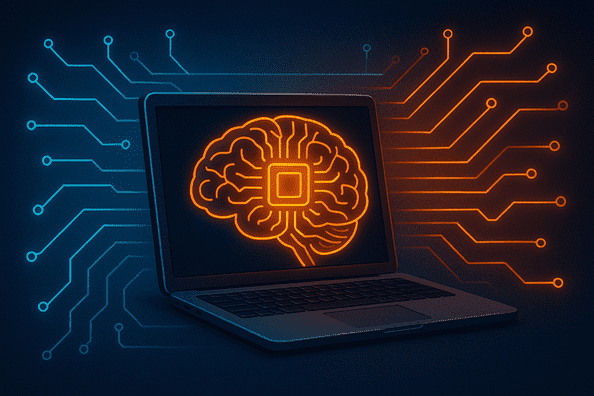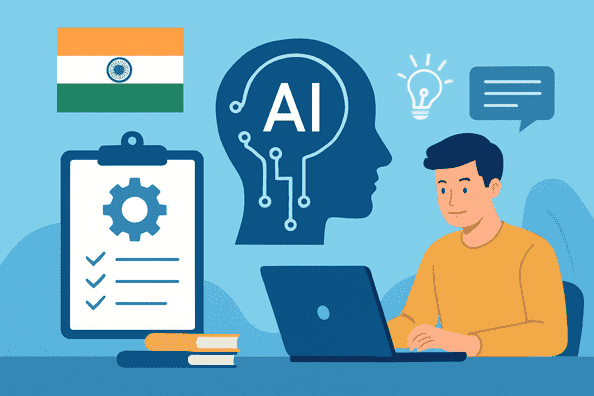Meta Platforms is making a massive investment in AI-powered humanoid robots, signaling a new era in robotics and artificial intelligence. This bold move aims to integrate AI into humanoid robots that can perform complex tasks, making them useful in various industries.
Meta’s Vision: AI-Powered Humanoid Robots for the Future
Meta’s goal is to develop AI-powered humanoid robots capable of interacting with humans naturally. The company’s Reality Labs division is spearheading this effort, focusing on AI, sensors, and software for robots. These technologies will allow companies to manufacture and sell consumer robots equipped with Meta’s AI capabilities.
According to a leaked internal memo, the company aims to create humanoid robots for household and commercial use. The integration of advanced AI, including its Llama models, will enable these robots to learn, adapt, and assist in everyday tasks.
Strategic Leadership and Key Hires
To ensure success, Meta has recruited key industry veterans.
- Marc Whitten, former CEO of Cruise, has been appointed as Vice President of Robotics. His background in autonomous vehicles will be instrumental in designing AI-powered humanoid robots that can navigate real-world environments.
- John Koryl, former CEO of The RealReal, has joined as Vice President of Retail. His focus will be boosting sales of Meta’s AI-driven products, including humanoid robots and augmented reality devices.
These leadership appointments underscore Meta’s commitment to leading in the AI and robotics space.
AI and Robotics: A Perfect Integration
Meta’s expertise in AI and augmented reality will be crucial in developing AI-powered humanoid robots.
- Advanced AI Models: The company plans to integrate its Llama AI models into robots, allowing them to process human language and respond intelligently.
- Sensor Technology: Reality Labs is developing sensors that enhance robot perception, enabling better movement and interaction with objects.
- Hand Tracking & Material Simulation: These features will make humanoid robots more adaptable, allowing them to manipulate objects with precision.
Meta’s approach aims to create intelligent humanoid robots that can function in homes, offices, and public spaces.
Competing with Tech Giants in Humanoid Robotics
Meta’s investment places it in direct competition with Tesla and Nvidia-backed Figure AI, both of which are developing AI-powered humanoid robots.
- Tesla’s Optimus Robot: Tesla is designing humanoid robots for industrial and household use, focusing on automation.
- Figure AI’s Humanoid Robotics: Figure AI is working on AI-driven robots to assist in logistics, retail, and healthcare.
With Meta entering the race, the competition to create the most advanced AI-powered humanoid robots is heating up.
Applications of AI-Powered Humanoid Robots
1. Healthcare
AI-powered humanoid robots can assist doctors, provide patient care, and perform repetitive tasks like medication distribution. This could significantly enhance efficiency in hospitals.
2. Retail Industry
Retailers can use humanoid robots for inventory management, customer service, and cashier-less checkout systems, reducing operational costs.
3. Hospitality
Hotels and restaurants can deploy AI-powered humanoid robots for concierge services, cleaning, and room service, enhancing guest experience
4. Manufacturing
Industrial automation is another major use case. Humanoid robots can work alongside human employees, handling assembly line tasks with precision.
5. Domestic Assistance
For home use, AI-driven humanoid robots can assist with chores, cooking, security, and even elderly care, making everyday life easier.

Ethical Challenges of AI-Powered Humanoid Robots
1. Privacy and Data Security
With AI-powered humanoid robots collecting and processing vast amounts of data, ensuring user privacy and data security is critical.
2. Job Displacement
Automation can lead to job losses in sectors like retail and manufacturing. Meta will need to address workforce reskilling and new employment opportunities
3. AI Bias and Fairness
AI models can inherit biases from their training data, leading to discrimination in decision-making. Ensuring fair and unbiased AI will be crucial for public acceptance.
4. Safety Concerns
Deploying humanoid robots in public and private spaces requires strict safety regulations to prevent accidents or malfunctions.
Meta’s Financial Commitment Despite Challenges
Despite Reality Labs reporting significant financial losses, Meta remains committed to investing in AI-powered humanoid robots. This move reflects its long-term vision of dominating the AI and robotics sector.
- Focus on Long-Term Innovation: Meta sees AI-powered humanoid robots as the next technological revolution, similar to its investment in AR/VR.
- Revenue Diversification: By entering the robotics market, Meta aims to create new revenue streams beyond social media and advertising.
Future of AI-Powered Humanoid Robots
The rise of AI-powered humanoid robots is inevitable, with applications spanning multiple industries. Meta’s entry into this space signals a paradigm shift, positioning AI and robotics at the center of future technological advancements.
With continued investment, strategic leadership, and cutting-edge AI integration, Meta is set to shape the future of AI-powered humanoid robots, transforming the way humans interact with machines.



